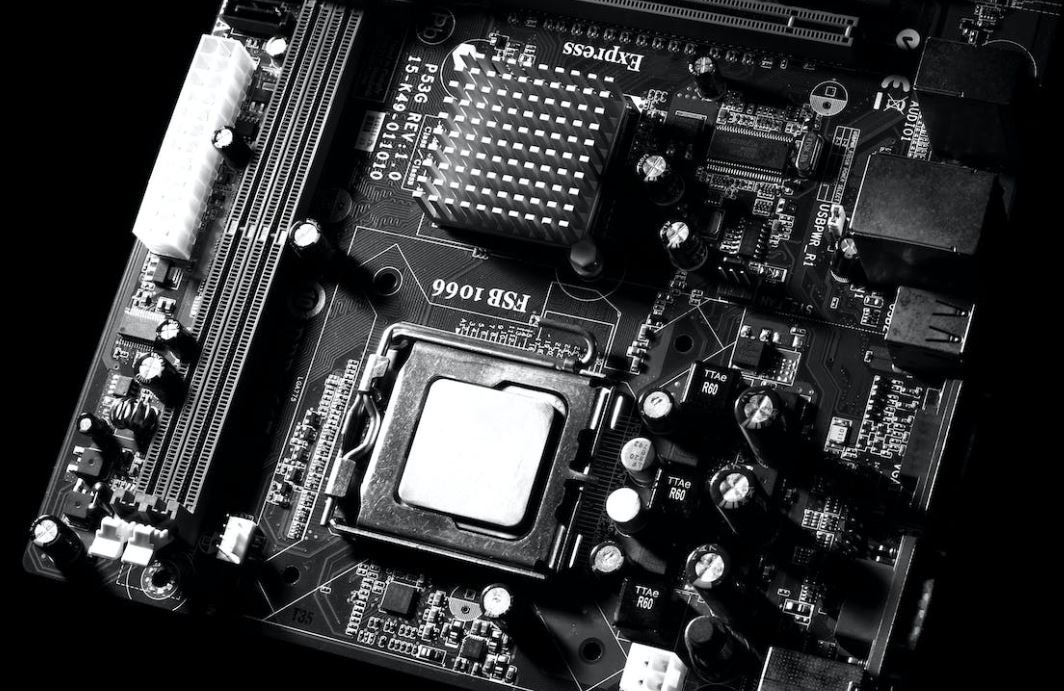Buy vs Build AI – Which Option is Right for You?
Artificial Intelligence (AI) is revolutionizing industries across the globe. Whether you’re a small startup or a large enterprise, harnessing the power of AI can give you a competitive edge. But should you buy AI solutions off the shelf or build your own? In this article, we will explore the pros and cons of both approaches to help you make an informed decision.
Key Takeaways:
- Purchasing AI solutions saves time and resources.
- Building your own AI offers customization and control.
- Consider the scalability and complexity of your AI needs.
- Weigh the costs and benefits of each approach.
Buying AI Solutions
**Buying AI solutions off the shelf** can be a quick and convenient option for businesses looking to implement AI without the need for extensive development. There are numerous **pre-built AI tools and platforms available** that cover a wide range of applications, such as natural language processing, image recognition, and predictive analytics. With ready-made solutions, you can **get started quickly** and leverage the expertise of AI vendors who have already invested significant time and resources into building robust AI models.
*However, it’s important to note that off-the-shelf solutions might not perfectly fit your specific requirements*, and **customization options might be limited**. If your business demands unique AI capabilities or requires tight integration with existing systems, buying AI solutions may not offer the level of flexibility required. Furthermore, **ongoing licensing fees** can increase the overall cost of using third-party AI tools in the long run.
Building Your Own AI
**Building your own AI** gives you complete control over the development process and allows for **tailoring AI models according to your specific needs**. This approach is ideal for businesses that require **highly customized AI solutions** or deal with sensitive data that cannot be outsourced. By building AI in-house or with the help of a dedicated AI development team, you can ensure that your AI system aligns perfectly with your business goals.
*It’s worth mentioning that building your own AI requires substantial upfront investment*, including hiring skilled AI professionals, acquiring infrastructure, and dedicating time for research and development. Additionally, **maintaining and updating the AI system** to keep up with evolving technologies and requirements can pose ongoing challenges. Considering the complexity and time-intensive nature of AI development, building your own AI solution may not be suitable for every organization.
Comparing the Options
| Buying AI Solutions | Building Your Own AI | |
|---|---|---|
| Cost | Lower initial cost, but ongoing licensing fees. | Higher upfront investment, but potential long-term cost savings. |
| Customization | Limited customization options. | Complete control over customization. |
| Expertise | Benefit from vendor expertise. | Requires specialized AI skills. |
| Time to Implement | Quick to implement. | Time-intensive development process. |
| Maintenance | Vendor handles maintenance and updates. | In-house responsibility for maintenance and updates. |
Ultimately, the decision between buying or building AI solutions depends on your specific circumstances and objectives. **Consider the scalability and complexity of your AI needs**. If your requirements are relatively simple and off-the-shelf solutions meet your criteria, buying might be the way to go. On the other hand, if you have unique demands that require extensive customization, building your own AI can provide the level of flexibility and control you need.
*Remember, there is no one-size-fits-all solution*, and conducting a thorough cost-benefit analysis is crucial. Take into account the **upfront investment, ongoing costs**, and **expertise required** for each option. By carefully evaluating your needs, resources, and long-term goals, you can make the right choice that aligns with your business objectives and maximizes the benefits of AI technology.
Conclusion
AI technology offers immense opportunities for businesses across industries. Whether you decide to buy or build AI solutions, always choose an approach that aligns with your specific requirements and objectives. Weigh the pros and cons, consider the costs and benefits, and evaluate your long-term goals. AI is a powerful tool that can transform your business, so choose wisely and embrace the potential it holds.

Common Misconceptions
Misconception #1: Buying AI is always better than building it
One common misconception people have when it comes to AI is that buying pre-built solutions is always the best option. However, this is not always the case.
- Building AI allows for customization to specific business needs
- Buying AI may come with hidden costs, such as licensing fees or limitations on usage
- Building AI can provide a better understanding of the underlying algorithms and improve troubleshooting
Misconception #2: Building AI from scratch is too time-consuming and complex
Another misconception is that building AI from scratch is a monumental task that requires extensive expertise and time. While it is true that building AI can be complex, there are various tools and frameworks available that simplify the process.
- AI development platforms offer drag-and-drop interfaces for building AI models
- Online resources and tutorials provide step-by-step guidance for building AI
- Taking a modular approach to AI development allows for incremental building and faster deployment
Misconception #3: Buying AI guarantees better performance and accuracy
Many people believe that buying AI solutions will automatically guarantee superior performance and accuracy compared to building AI. However, the performance of AI greatly depends on the quality of data, model training, and fine-tuning, regardless of whether it is bought or built.
- The accuracy of AI is influenced by the suitability of training datasets
- Building AI allows for constant improvement and fine-tuning based on specific requirements
- Buying AI does not eliminate the need for proper integration and optimization for optimal performance
Misconception #4: Building AI requires a large budget and resources
Some individuals assume that building AI requires a substantial budget and a team of experts. While significant resources may be necessary for certain advanced AI projects, there are also more economical options available for smaller-scale AI development.
- Open-source AI frameworks provide cost-effective options for building AI
- Cloud-based AI platforms offer pay-as-you-go pricing models
- Collaboration and knowledge-sharing can reduce costs by leveraging existing expertise within the organization or community
Misconception #5: Buying AI eliminates the need for in-house AI expertise
Lastly, many people mistakenly believe that purchasing AI solutions removes the need for in-house AI expertise. While buying AI can alleviate some burdens, having AI expertise within the organization is crucial for deployment, customization, and long-term success.
- In-house AI experts can integrate and optimize AI solutions for specific business needs
- Having AI expertise enables continuous AI model improvement and adaptation
- In-house AI expertise can provide better understanding and governance of AI ethics and fairness

Table: Average Cost of Building an AI vs Buying an AI
Building an AI from scratch can be a complex process that requires significant investment in research, development, and hiring AI experts. On the other hand, buying an AI solution from a vendor can be a more straightforward and cost-effective option. The table below compares the average cost of building an AI versus buying an AI.
| Cost Elements | Building an AI | Buying an AI |
|---|---|---|
| Research and Development | $500,000+ | $0 |
| Hiring AI experts | $200,000/year | $0 |
| Infrastructure | $100,000 | $0 |
| Data acquisition | $50,000 | $0 |
| Maintenance and Updates | $50,000/year | $20,000/year |
| Total Cost (5-year period) | $2,100,000+ | $100,000 |
Table: Time to Deploy
The time it takes to deploy an AI solution can vary significantly depending on whether you choose to build or buy. The table below compares the estimated time it takes for deployment.
| Deployment Time | Building an AI | Buying an AI |
|---|---|---|
| Time for Research and Development | 1-2 years | 0 |
| Time for Data Acquisition | 3-6 months | 0 |
| Time for Training and Testing | 6-12 months | 1-2 months |
| Time for Implementation | 3-6 months | 1-2 weeks |
| Total Time for Deployment | 2-3 years | 2-3 months |
Table: Scalability
Scalability is a key factor to consider when deciding whether to build or buy an AI solution. The table below illustrates the scalability options for built and bought AI solutions.
| Scalability | Building an AI | Buying an AI |
|---|---|---|
| Flexibility in Scaling Up | High | High |
| Flexibility in Scaling Down | High | Low |
| Adaptability to Changing Needs | High | Medium |
| Ease of Integrating New Features | Low | High |
| Availability of Expansion Options | Limited | Extensive |
Table: Customization Options
Customization capabilities can greatly impact the functionality and fit-for-purpose of an AI solution. The table below provides an overview of the customization options for building versus buying an AI.
| Customization | Building an AI | Buying an AI |
|---|---|---|
| Ability to Customize Features | High | Medium |
| Ability to Customize User Interface | High | Medium |
| Availability of Pre-built Templates | Low | High |
| Availability of Integrations | Medium | High |
| Levels of Complexity in Customization | High | Medium |
Table: Performance
Performance measures the effectiveness and efficiency of an AI solution. The following table compares the performance aspects of building and buying AI solutions.
| Performance | Building an AI | Buying an AI |
|---|---|---|
| Accuracy | Dependent on R&D and data quality | Can vary across vendors |
| Processing Speed | High, if tailored to the task | Vendor-dependent |
| Capability to Handle Big Data | High, with proper infrastructure | Vendor-dependent |
| Fault Tolerance | High, can be designed for resilience | Vendor-dependent |
| Adaptability to Complex Scenarios | High, with proper training | Vendor-dependent |
Table: Support and Maintenance
Support and maintenance services play a crucial role in ensuring the optimal functioning of AI solutions. The following table compares the support and maintenance aspects of building versus buying an AI.
| Support and Maintenance | Building an AI | Buying an AI |
|---|---|---|
| Availability of Technical Support | In-house team | Vendor-provided |
| Response Time for Resolving Issues | Dependent on in-house team | Vendor-dependent |
| Access to Regular Updates | In-house control | Vendor-provided |
| Cost of External Maintenance Services | Variable | Included in contract |
| Availability of Training and Resources | Dependent on in-house efforts | Vendor-provided |
Table: Regulatory Compliance
Compliance with regulations is critical, especially in industries with strict data privacy and security requirements. The table below compares the regulatory compliance aspects of building and buying an AI solution.
| Regulatory Compliance | Building an AI | Buying an AI |
|---|---|---|
| Responsibility for Regulatory Compliance | In-house responsibility | Shared responsibility with the vendor |
| Ease of Implementing Compliance Measures | Challenging, requires extensive knowledge | Vendor-dependent |
| Adaptability to Changing Regulations | High, with in-house control | Vendor-dependent |
| Availability of Compliance Certifications | Variable | Vendor-provided |
| Accountability in Case of Non-Compliance | In-house responsibility | Shared responsibility with the vendor |
Table: Strategic Alignment
Strategic alignment refers to how well an AI solution aligns with an organization’s long-term goals and objectives. The table below compares the strategic alignment aspects of building and buying AI solutions.
| Strategic Alignment | Building an AI | Buying an AI |
|---|---|---|
| Ability to Tailor AI to Specific Needs | High | Medium |
| Alignment with Organizational Infrastructure | High | Medium |
| Compatibility with Existing Systems | Variable, integration complexity | Vendor-dependent |
| Effectiveness in Achieving Strategic Goals | High, when customized properly | Vendor-dependent |
| Flexibility for Future Growth | High, if designed with scalability in mind | Vendor-dependent |
Table: Risk Assessment
Risk assessment is an important factor to consider when making a decision between building or buying an AI solution. The following table compares the risk aspects associated with building and buying AI solutions.
| Risk Assessment | Building an AI | Buying an AI |
|---|---|---|
| Technical Risks | High – Complex development process | Medium – Vendor reliability and quality |
| Financial Risks | High – Cost overruns, unforeseen expenses | Low – Transparent pricing models |
| Talent Risks | High – Difficulty in hiring and retaining experts | Low – Access to vendor’s expert resources |
| Implementation Risks | High – Complexity and potential integration challenges | Low – Vendor expertise in deployment |
| Data Risks | Medium – Proper data management required | Medium – Data security and privacy measures |
Conclusion: The decision to build or buy an AI solution depends on various factors such as cost, time, scalability, customization, performance, support, regulatory compliance, strategic alignment, and risk. While building an AI can provide more flexibility and control, it comes with higher costs, longer deployment timelines, and increased risks. On the other hand, buying an AI can offer cost-effective and readily available solutions, but may limit customization and strategic alignment. Organizations need to carefully evaluate these considerations to find the best approach for their specific needs and goals.
Frequently Asked Questions
Should I buy an AI solution or build it from scratch?
What are the advantages of buying an AI solution?
Buying an AI solution can save time and resources as it usually comes pre-built with all the necessary functionalities. It also benefits from continuous updates and improvements from the vendor.
What are the advantages of building an AI solution?
Building an AI solution allows you to customize it according to your specific needs and requirements. It provides greater flexibility and control over the development process.
What factors should I consider when deciding between buying or building AI?
What is the complexity of the desired AI solution?
If the AI solution required is complex and highly specialized, building it from scratch may be more suitable. However, for simpler and widely-used applications, buying a pre-built solution can be a viable option.
What is the time frame for deployment?
Building an AI solution from scratch can be time-consuming, whereas buying an existing solution can significantly reduce the deployment time, allowing for faster implementation.
Are there any cost considerations when choosing between buying or building AI?
How much does it cost to buy an AI solution?
The cost of buying an AI solution can vary depending on factors such as the complexity of the solution, the vendor, and additional support or customization options. It is important to consider the total cost of ownership, including licensing fees and any required infrastructure or maintenance costs.
What are the expenses associated with building an AI solution?
Building an AI solution requires investment in hiring skilled AI professionals, infrastructure setup, and ongoing maintenance and support costs. The overall expenses can vary based on the scope and complexity of the project.
What are the potential risks and challenges of buying or building AI?
What are the risks of buying an AI solution?
Depending on the vendor, buying an AI solution may limit customization options and require integration with existing systems. There may also be concerns regarding data privacy and security, vendor lock-in, and the ongoing support and updates provided by the vendor.
What are the challenges of building an AI solution?
Building an AI solution requires significant expertise and resources. Challenges may include finding and retaining skilled AI professionals, managing the development process, and ensuring the system’s accuracy, reliability, and scalability.
How can I determine the best option for my specific AI needs?
What are the specific requirements and goals of the AI solution?
Understanding the specific requirements and goals of the AI solution is crucial in making the right decision. Assessing factors such as complexity, desired features, timeline, available resources, and budget can help determine whether buying or building is the best option.
What is the long-term strategy and vision for AI implementation in the organization?
Considering the long-term strategy and vision for AI within the organization can guide the decision-making process. It is important to evaluate whether buying or building aligns with the overall plan and future scalability requirements.




